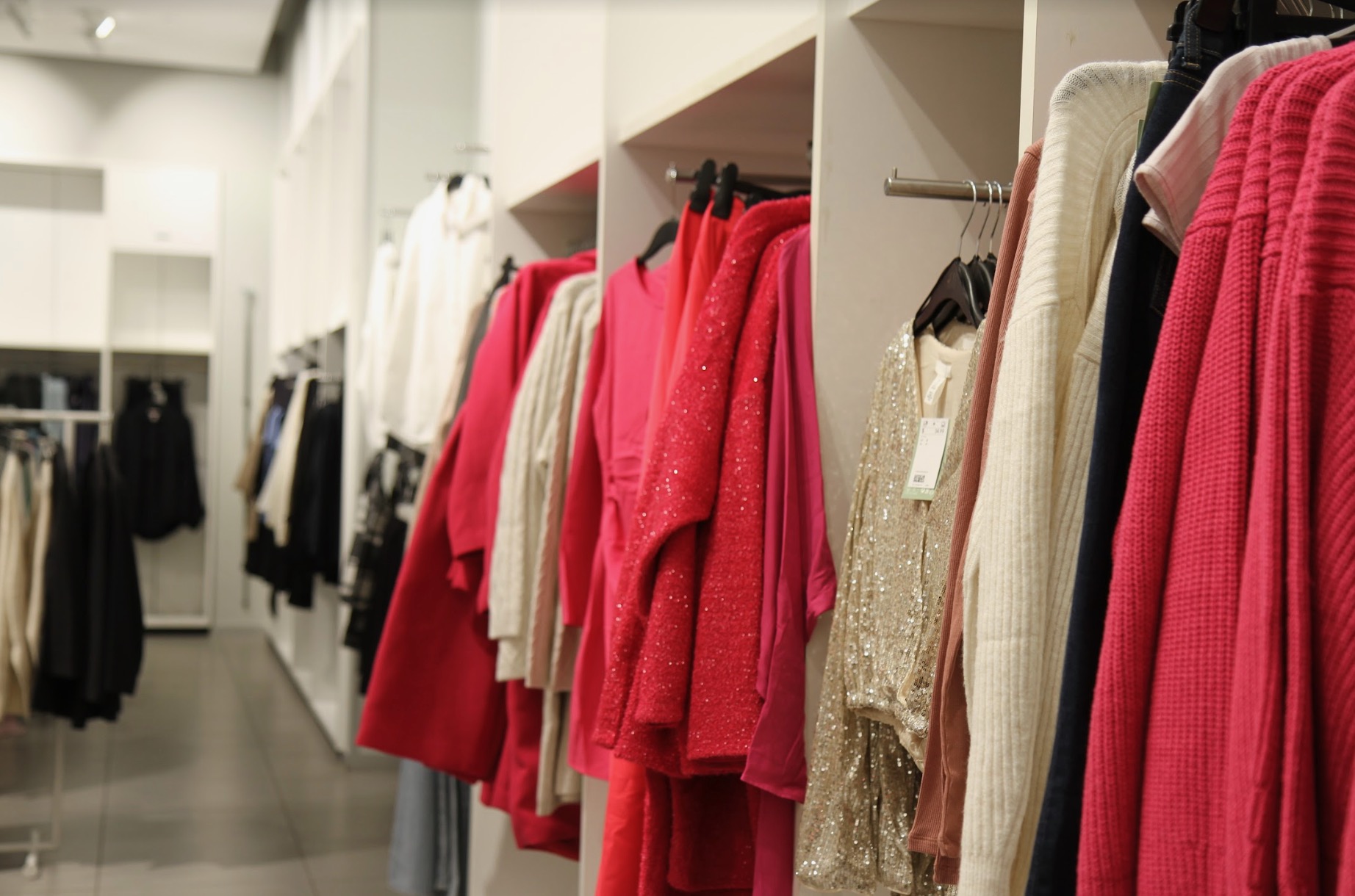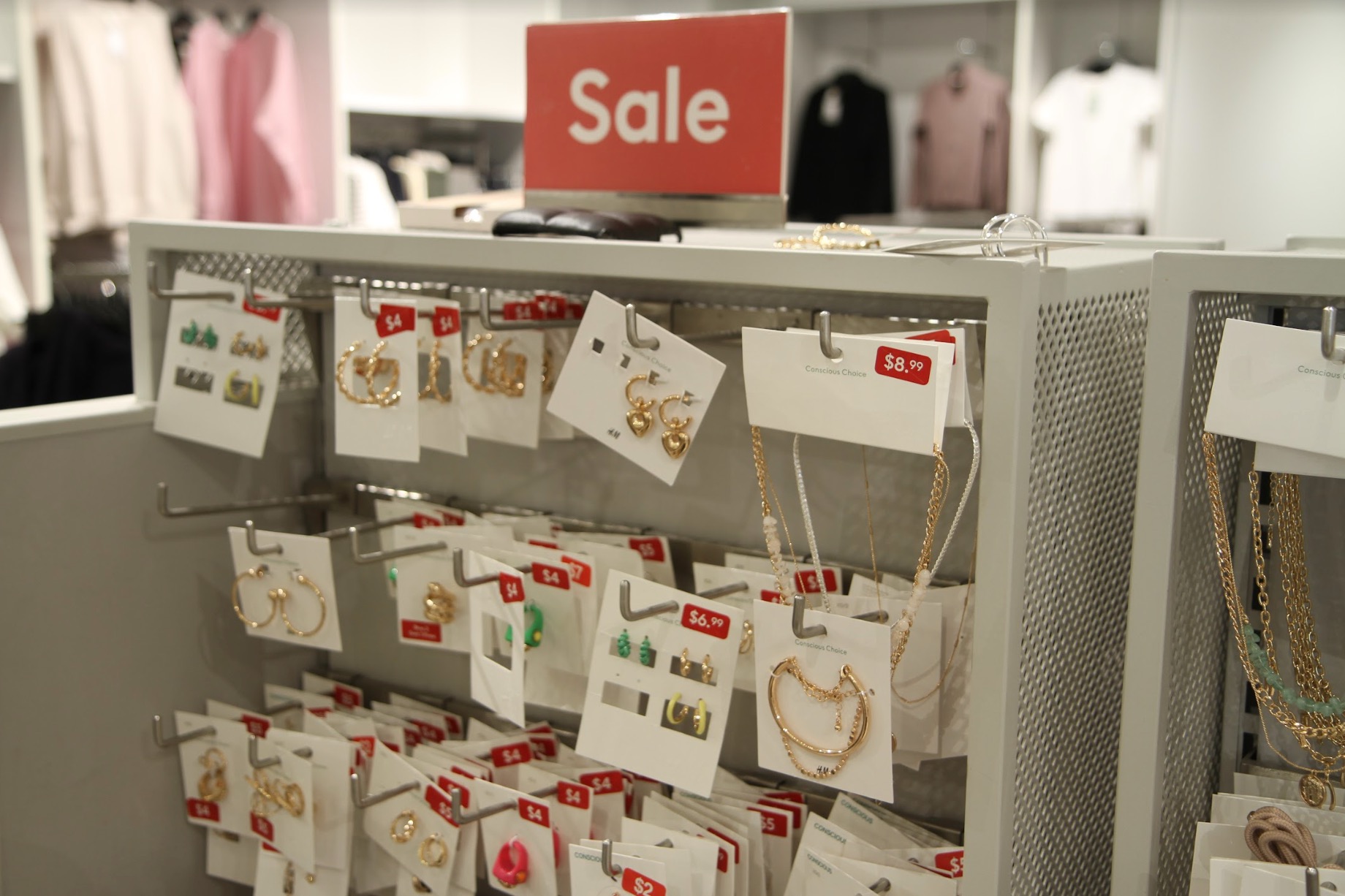The truth behind "retail therapy"
The full extent of fast fashion and its implications on the world today
From skinny to relaxed jeans, oversized to cropped shirts, high-top to low-top shoes, fashion trends are ever-changing; so how are so many people able to keep up? The answer is "fast fashion" – two seemingly harmless words that hide a dark world of overconsumption and exploitative labor.
Fast fashion brands are defined by their low-cost and quick production cycle, able to roll out new and "trendy" clothing fast. The most well-known fast fashion brands are SheIn and H&M, but more popular stores such as Adidas, Nike, and Uniqlo are fast fashion brands as well. Their business models target bargain-hunting consumers, who often attribute their actions to "retail therapy," the act of buying new clothes to make the buyer feel happier.
While fast fashion brands take an average of only four weeks throughout the entire fashion cycle – consisting of the planning phase, sell-in phase to various stores, and delivery phase – sustainable (also referred to as "slow fashion") brands which take extra efforts to be eco-friendly and provide a suitable working environment for employees take at the very least 12 weeks.
The reduced fashion cycle with fast fashion brands accounts for an extreme exploitation of workers with low wages and difficult working conditions who work up to 16 hours a day, seven days a week.
For instance, the Playfair 2012 campaign leading up to the 2012 London Olympics exposed that Adidas workers in China were forced to work from 8 a.m. to 11 p.m. to scrape up enough money to get by, given the low wages.
Nike sweatshops are no better; child labor, deteriorating workspaces and restricted access to toilets are serious issues for workers. Despite these glaring issues, Nike is certified under the Fair Labor Association Workplace Code of Conduct according to the ethical clothing advocacy group Good On You.
Additionally, the shorter production process requires fast fashion brands to resort to cheaper or copied designs. Fast fashion brands are purposely copying popular designs in order to attract consumers with cheaper prices. Zara and Forever 21, in particular, have been accused of copying designs numerous times.
Sophomore Ephrata Yohannes, a former student of Blair's fashion illustration class, points out that new and innovative designs are actually not difficult to come up with. "The idea just comes to you…When I'm [planning a design], it's something that comes up to me at the moment," she says.
Moreover, fast fashion brands use generalized designs for multiple different body types. When a consumer doesn't fit into the clothes, it can lead to body dysmorphia and possibly even eating disorders (EDs). Negative body image from the ill-fitting of clothes can lead to the development of anorexia nervosa, bulimia nervosa, and binge eating disorder. The rates of younger people developing EDs has risen dramatically, especially for Generation Z. According to a CDC news report from February, the proportion of Emergency Room visits due to eating disorders doubled among adolescent females in the US from just March to October in 2020.
Sophomore Kayline Nzetam, former fashion illustration student, states that pieces need to be custom-tailored to truly fit the consumer's body type and personality. "I have to look at which body type I'm promoting…and then go about how I'm gonna make the person wearing it feel comfortable in what they're wearing," Nzetam says.
Furthermore, cheaper non-renewable materials are more frequently used by unethical clothing lines to save money; but there is a greater price to pay – the depletion of fossil fuels and microplastic pollution. Annual global emission by the textile industry accounts for 10 percent of carbon emissions. Textile waste including plastics that are non-degradable in the form of microplastics can find themselves in the stomachs of animals, including humans, through water.
Sustainable brands have numerous environmental and social benefits in comparison to fast fashion brands. With more fitting and comfortable clothing, as is the case with more sustainable brand clothing, consumers will be more likely to wear the clothes often and wear them for a longer period of time.
For instance, more expensive materials such as silk and cotton are often more comfortable than cheaper materials such as polyester. Nzetam reached for cotton and silk the most when making her garments. "I like to use cotton … and silk because [they're] just very smooth on the skin," Nzetam explains.
There is a rise in the overconsumption of clothes in the newer generations, especially due to the rise of influencers sponsored by fast fashion brands. Alibaba founder Jack Ma noticed this generational change. "My grandmother has only one shirt in her wardrobe. My mother has three. My daughter’s generation, 50. And 48 percent of them, she never wears," Ma says.
Fashion hauls, a concept that first gained popularity through Youtube, exacerbated problems regarding fast fashion. Fashion hauls are videos where influencers show their newest clothing purchases to their fans. The hauls quickly spread to other social media platforms including Instagram and TikTok; this led to an eventual spike in sponsored TikTok influencers at the start of the COVID-19 pandemic, further promoting fast fashion brands. For instance, SheIn now has an affiliate program that allows creators to earn 20 to 30 percent of their sales in exchange for promoting their clothing.
Soon, larger hauls featuring multiple bags of clothes became popular through creators like Emma Chamberlain and Emma Marie. Rabia Abbasi, a TikToker focused on vintage fashion explains that the issue in these hauls are about the sheer amount of clothes being shown. "That's what really promotes and encourages overconsumption," she tells Business Insider.
On the other hand, sustainable brands often focus on the quality of their garments and on the environmental impact more than the potential profit gained. For instance, Anne Johnson, founder of Bitter Grace, a woman-owned clothing brand based in D.C., runs a sustainable business focused on transparency and quality.
Bitter Grace takes an all-around approach to sustainability, focusing not only on the quality of their garments but also on that of their packaging. Bitter Grace uses recycled bags and the same recycled craft tissue paper to package the garments despite the material's higher cost.
Through her business, Johnson shows that production waste can be avoided by sticking to classic designs. "We believe in our products. We just know they're timeless enough and transitional enough that I know eventually they will sell," she says.
The main reason that consumers shy away from slow fashion is because of issues with affordability. In spite of the inevitable higher cost of slow fashion, it is still possible to be sustainable by relying on only a few clothing pieces.
Bitter Grace exemplifies the idea that truly well-made pieces can last a long time. "It really is beyond clothing for us. It's about having a positive self-image of you. It's about embracing and embodying quality pieces that sustains you for the future. Sustainability for us, in many ways, is about longevity and wearability of a garment and the power of intention when you're investing in pieces," Johnson says.
Likewise, thrifting and upcycling are also effective alternatives as shoppers would be reusing clothes instead of purchasing new ones: all for a lower price. Nonetheless, the most important part of sustainable shopping is to wear clothes for long periods of time, regardless of the ethics of its brand, and to limit shopping trips.
Johnson acknowledges that nobody is fully conscious of their spending habits. "After learning about fast fashion, it was quite troubling and I personally couldn't turn a blind eye away from it…I don't have all the answers. A lot of people don't. I'm learning, and I want everyone who's a part of our journey to also be thoughtful consumers…because that is really where the power of intention comes through," Johnson says.
Sophia Zeng. Hi! I'm Sophia and I am the Internal Managing and Humans of Blair editor. I enjoy playing the piano, biking and listening to music. More »
Comments
No comments.
Please ensure that all comments are mature and responsible; they will go through moderation.

